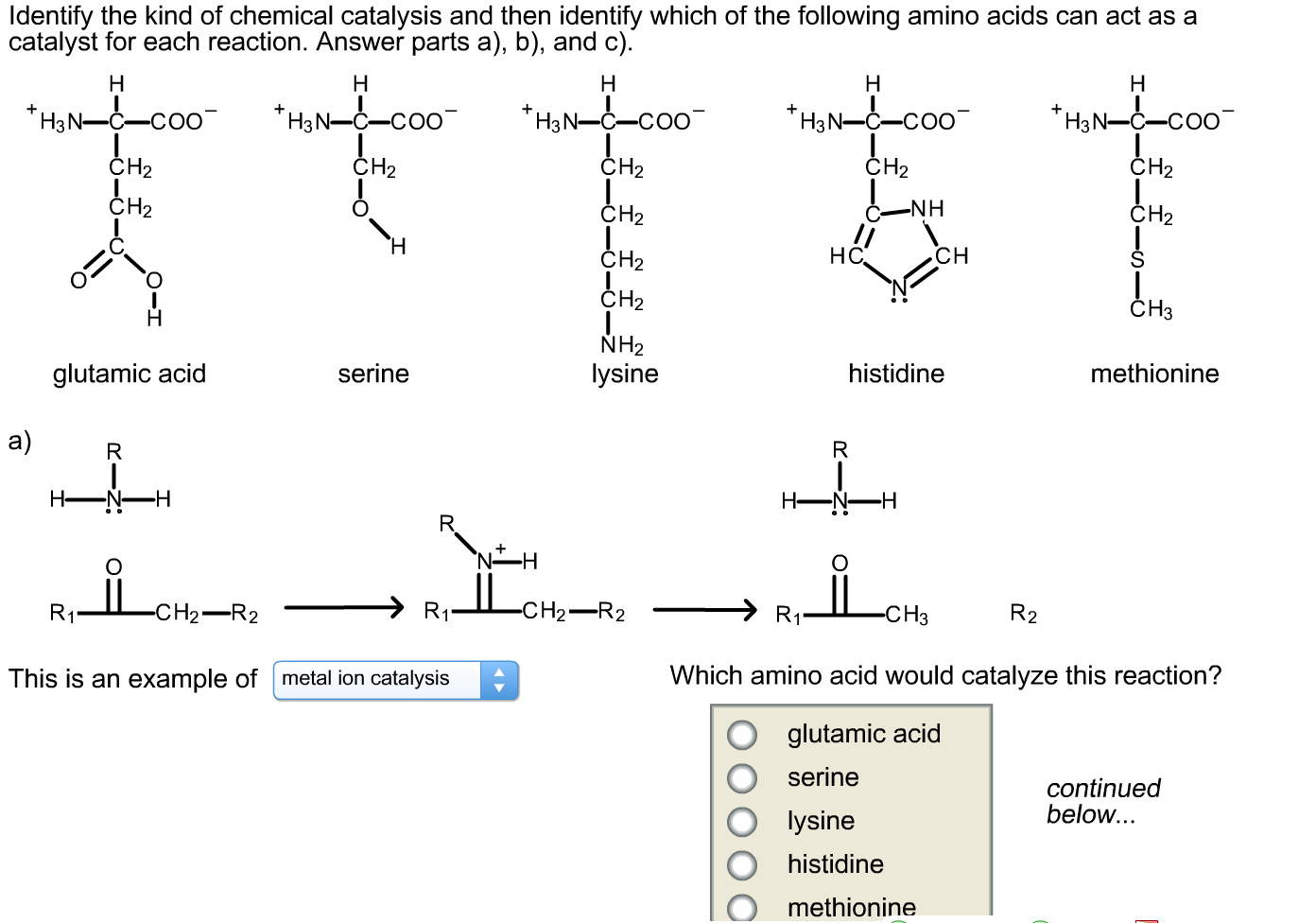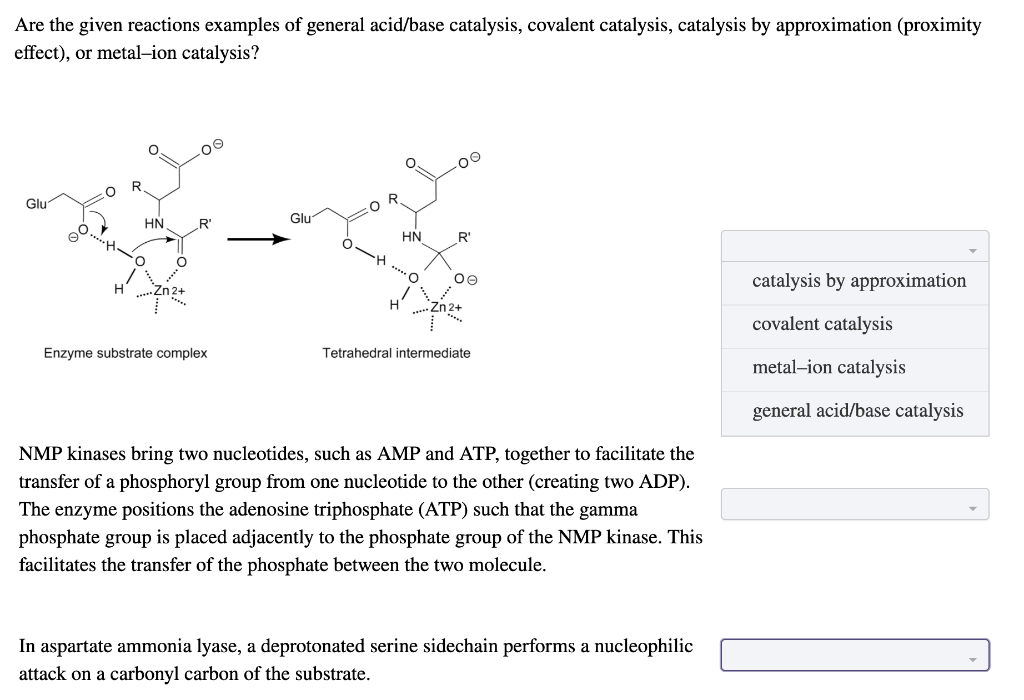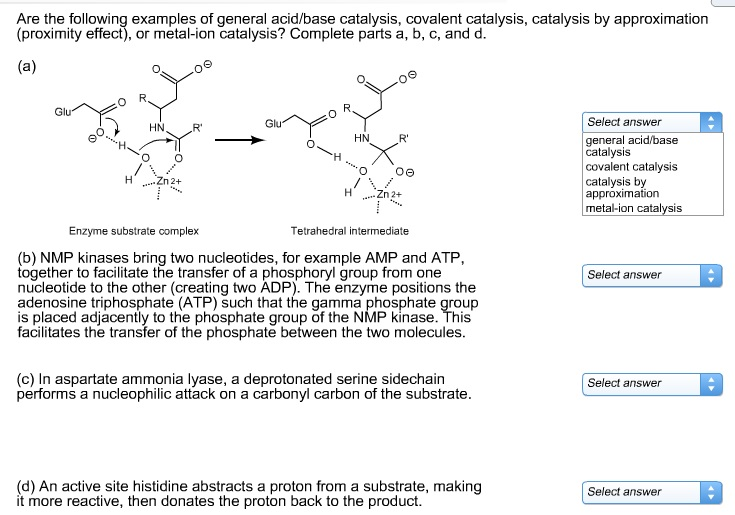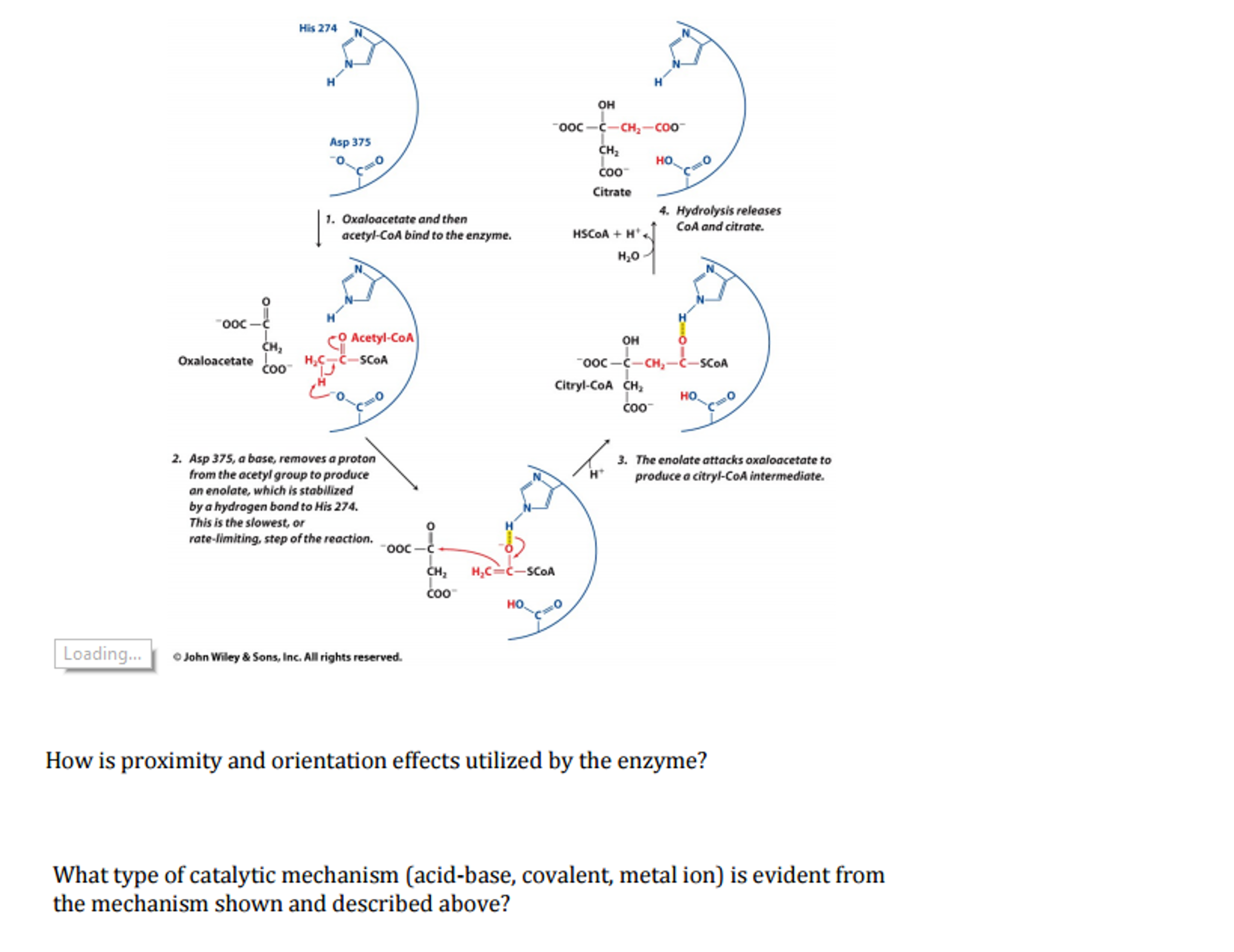What Is Covalent Catalysis
What Is Covalent Catalysis - Covalent catalysis occurs when the. Covalent catalysis leads to rapid progression of reactions by forming covalent bonds between enzyme and substrate. Covalent catalysis involves the formation of a transient covalent bond between an enzyme and a substrate, creating an intermediate molecule that. Covalent catalysis involves the substrate forming a transient covalent bond with residues in the enzyme active site or with a cofactor. Covalent catalysis is one of the four strategies that an enzyme will employ to catalyze a specific reaction.
Covalent catalysis is one of the four strategies that an enzyme will employ to catalyze a specific reaction. Covalent catalysis involves the formation of a transient covalent bond between an enzyme and a substrate, creating an intermediate molecule that. Covalent catalysis involves the substrate forming a transient covalent bond with residues in the enzyme active site or with a cofactor. Covalent catalysis leads to rapid progression of reactions by forming covalent bonds between enzyme and substrate. Covalent catalysis occurs when the.
Covalent catalysis involves the formation of a transient covalent bond between an enzyme and a substrate, creating an intermediate molecule that. Covalent catalysis leads to rapid progression of reactions by forming covalent bonds between enzyme and substrate. Covalent catalysis occurs when the. Covalent catalysis is one of the four strategies that an enzyme will employ to catalyze a specific reaction. Covalent catalysis involves the substrate forming a transient covalent bond with residues in the enzyme active site or with a cofactor.
Catalysis Fundamentals Chemical Engineering Page 1
Covalent catalysis involves the formation of a transient covalent bond between an enzyme and a substrate, creating an intermediate molecule that. Covalent catalysis occurs when the. Covalent catalysis involves the substrate forming a transient covalent bond with residues in the enzyme active site or with a cofactor. Covalent catalysis is one of the four strategies that an enzyme will employ.
SOLVED 1. What is covalent catalysis? Describe the two parts of a
Covalent catalysis is one of the four strategies that an enzyme will employ to catalyze a specific reaction. Covalent catalysis involves the substrate forming a transient covalent bond with residues in the enzyme active site or with a cofactor. Covalent catalysis involves the formation of a transient covalent bond between an enzyme and a substrate, creating an intermediate molecule that..
[ANSWERED] Label the catalytic strategies below as covalent catalysis
Covalent catalysis involves the substrate forming a transient covalent bond with residues in the enzyme active site or with a cofactor. Covalent catalysis involves the formation of a transient covalent bond between an enzyme and a substrate, creating an intermediate molecule that. Covalent catalysis occurs when the. Covalent catalysis is one of the four strategies that an enzyme will employ.
Solved Are the following examples of general acid/base
Covalent catalysis involves the formation of a transient covalent bond between an enzyme and a substrate, creating an intermediate molecule that. Covalent catalysis involves the substrate forming a transient covalent bond with residues in the enzyme active site or with a cofactor. Covalent catalysis occurs when the. Covalent catalysis leads to rapid progression of reactions by forming covalent bonds between.
Solved Please help!!! Which of the following is acid base
Covalent catalysis is one of the four strategies that an enzyme will employ to catalyze a specific reaction. Covalent catalysis involves the formation of a transient covalent bond between an enzyme and a substrate, creating an intermediate molecule that. Covalent catalysis occurs when the. Covalent catalysis involves the substrate forming a transient covalent bond with residues in the enzyme active.
Solved Are the given reactions examples of general acid/base
Covalent catalysis occurs when the. Covalent catalysis is one of the four strategies that an enzyme will employ to catalyze a specific reaction. Covalent catalysis involves the substrate forming a transient covalent bond with residues in the enzyme active site or with a cofactor. Covalent catalysis involves the formation of a transient covalent bond between an enzyme and a substrate,.
Electrostatic catalysis applied to covalent inhibition. a, Common
Covalent catalysis involves the formation of a transient covalent bond between an enzyme and a substrate, creating an intermediate molecule that. Covalent catalysis involves the substrate forming a transient covalent bond with residues in the enzyme active site or with a cofactor. Covalent catalysis leads to rapid progression of reactions by forming covalent bonds between enzyme and substrate. Covalent catalysis.
Are the following examples of general acid/base
Covalent catalysis involves the formation of a transient covalent bond between an enzyme and a substrate, creating an intermediate molecule that. Covalent catalysis is one of the four strategies that an enzyme will employ to catalyze a specific reaction. Covalent catalysis involves the substrate forming a transient covalent bond with residues in the enzyme active site or with a cofactor..
Catalysis
Covalent catalysis involves the substrate forming a transient covalent bond with residues in the enzyme active site or with a cofactor. Covalent catalysis leads to rapid progression of reactions by forming covalent bonds between enzyme and substrate. Covalent catalysis occurs when the. Covalent catalysis involves the formation of a transient covalent bond between an enzyme and a substrate, creating an.
how does the proximity and orientation effect occur
Covalent catalysis is one of the four strategies that an enzyme will employ to catalyze a specific reaction. Covalent catalysis leads to rapid progression of reactions by forming covalent bonds between enzyme and substrate. Covalent catalysis involves the formation of a transient covalent bond between an enzyme and a substrate, creating an intermediate molecule that. Covalent catalysis involves the substrate.
Covalent Catalysis Involves The Formation Of A Transient Covalent Bond Between An Enzyme And A Substrate, Creating An Intermediate Molecule That.
Covalent catalysis is one of the four strategies that an enzyme will employ to catalyze a specific reaction. Covalent catalysis leads to rapid progression of reactions by forming covalent bonds between enzyme and substrate. Covalent catalysis involves the substrate forming a transient covalent bond with residues in the enzyme active site or with a cofactor. Covalent catalysis occurs when the.


![[ANSWERED] Label the catalytic strategies below as covalent catalysis](https://media.kunduz.com/media/sug-question-candidate/20230225013819557164-4123275.jpg?h=512)





